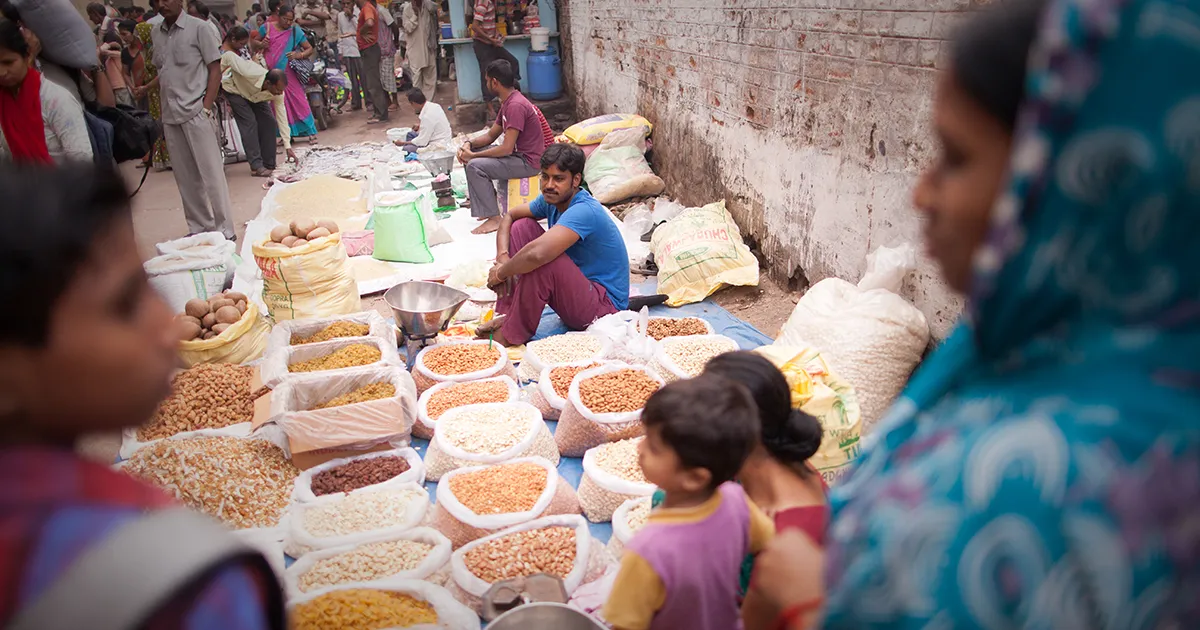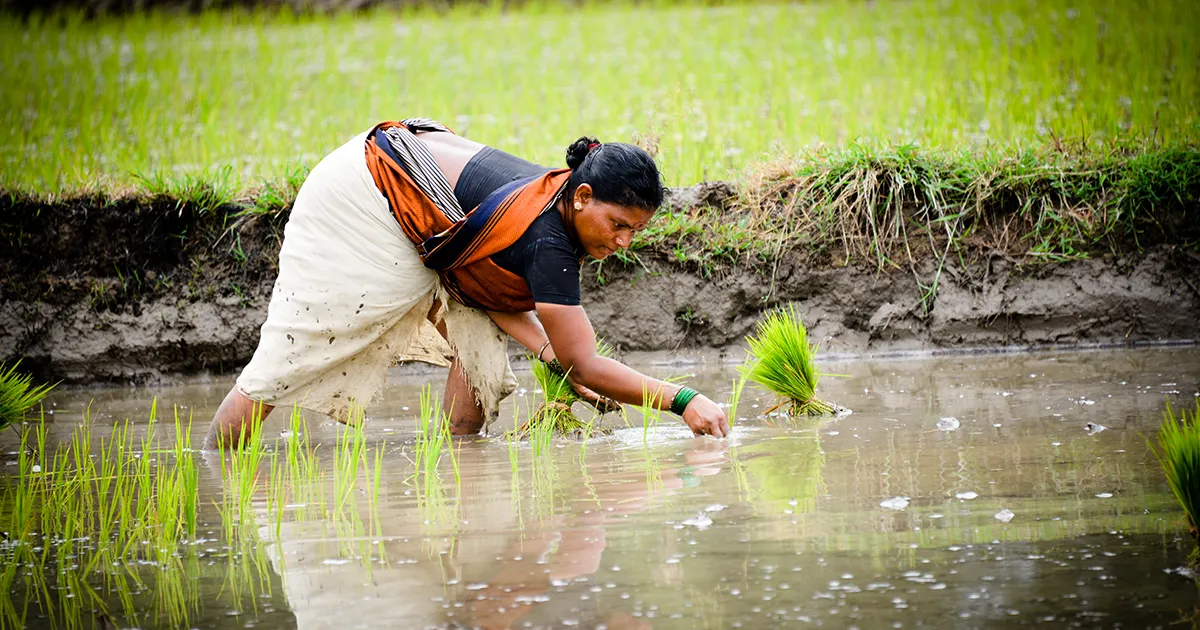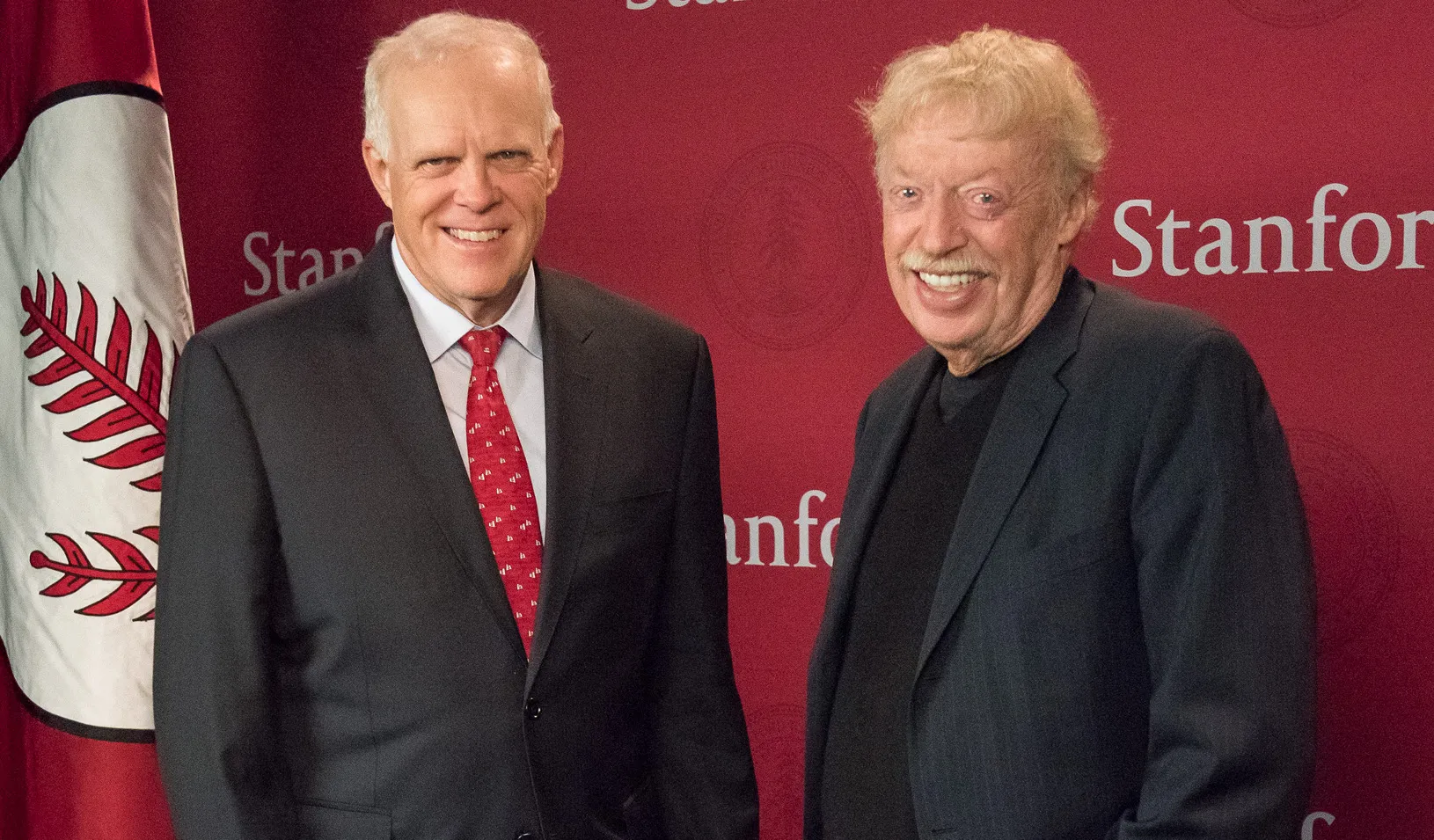Alleviating Childhood Malnutrition in India
Researchers collaborate with the Indian government to provide children with fortified rice in an effort to reduce alarming rates of anemia and malnutrition.
April 12, 2017

Indian vendors set up bags of grains and spices along the roadway in the outdoor spice market, located in the old part of the city. | iStock/BDphoto
Stanford health and development economist Grant Miller knows all too well how complicated a simple solution can be.
Such is the case in the state of Tamil Nadu, India, where millions of children suffer devastating health effects resulting from malnutrition and anemia. Although there is a relatively simple fix, efforts by the government to get children to take vitamins to prevent micronutrient deficiencies have been largely ineffective.

Grant Miller
Miller isn’t surprised; as part of a research project in China investigating similar micronutrient deficiencies, he has seen firsthand the challenge of getting individuals to change their behavior. In that case, a study requiring elementary school teachers and principals to administer vitamins to schoolchildren made some limited progress but was far from a true solution. The same basic approach didn’t seem to be working in Tamil Nadu, where a staggering 70 percent of preschool children suffer from anemia.
The frustrating problem has brought back painful memories for Miller, who understands the permanent damage that anemia can inflict on its youngest victims.
“I remember a listless child in the garbage heap,” he recalled. “He didn’t really know that he was ‘ill’; he just knew that he was always tired and had no energy. Anemia is a silent affliction. You cannot see it, but at critical periods of development, it can fundamentally disadvantage children’s cognitive abilities for their entire lives.”
In a new effort to deliver critical micronutrients to children with the least disruption and daily change in routine, Miller and his team are opting for an approach that’s been successful in many parts of the world, including the United States: the fortification of food. At the invitation of the Indian government, the team will fortify conventional rice, which will then be distributed through the study area using India’s existing Public Distribution System.
Miller is collaborating with development economists from the University of California, Berkeley and UPF University in Barcelona; a nutrition expert from Emory University who worked with Miller in China; and a former food industry CEO who works to bring fortified food to malnourished populations around the globe.
The potentially life-changing project is funded by a global poverty research award from the Stanford Institute for Innovation in Developing Economies, or Stanford Seed, in partnership with the Freeman Spogli Institute for International Studies, or FSI. Stanford Seed, led by Stanford Graduate School of Business, funds multiple international research projects, with the goal of ending the cycle of poverty in developing economies. It also operates the Seed Transformation Program for high-potential company leaders based in developing economies, along with the Seed Internship Program, which offers Stanford students an opportunity to undertake projects at the participating companies.
Fortification makes sense in a state with an existing rice distribution system, Miller said.
“In this case, we wouldn’t be trying to change people’s behavior; we wouldn’t be trying to get them to comply with some complicated vitamin-taking regimen all the time,” he said. “We wouldn’t be trying to get schools and day care centers to make sure that this is happening on a regular basis. People would just get their rice and consume it as they otherwise would, and they all of a sudden would be getting lots of micronutrients. But there are a variety of things that have made the project complicated.”

An Indian woman planting rice | iStock/Vardhan
Those complexities include establishing an ongoing rapport with a rotating series of government officials, navigating an intricate regulatory environment, and identifying domestic suppliers of quality fortified rice who are willing to work with the research team. After three years of preparation, Miller and his colleagues are now gearing up to begin an 18-month randomized control trial; some participants will continue receiving conventional rice, while others will receive the fortified product. Researchers will monitor a range of data to determine if micronutrient deficiencies decline as people consume fortified rice. And in the process, they will estimate just how hard it is to change dietary behavior.
The government of India has indicated that if the study is successful, officials will scale up the rice fortification program to serve the state’s 80 million residents.
“The fix is technologically easy and incredibly cheap,” said Miller, who credited Stanford Seed and FSI’s funding for making the project possible.
“The growth in our faculty who work on international development and are concerned with poverty alleviation has been enormous,” he said. “Having the funding to energize and capitalize on what’s possible now with this new growth is really tremendous, and Seed can really be a big catalyst in making that happen.”
The work in Tamil Nadu exemplifies Stanford Seed’s evolution into a program that collaborates across the entire university to alleviate global poverty, said Jesper Sørensen, Stanford Seed’s director and a professor of organizational behavior at Stanford GSB.
“What you’re going to see over the next five years are the ways in which Seed is a core part of Stanford, and an institute that engages with all parts of the university,” Sørensen said. “Through things like our global poverty research funding and our research initiatives, I think you’ll see all seven schools and institutes at the university doing transformative kinds of research and really engaging with the most fundamental problems that the poor face in the developing world.”
For media inquiries, visit the Newsroom.
Explore More
Phil Knight Honored with Uncommon Citizen Award

Catherine Roberts Joins Stanford GSB as CCMO

Alyssa Rapp, MBA ’05: What Matters to Me Now and Why
